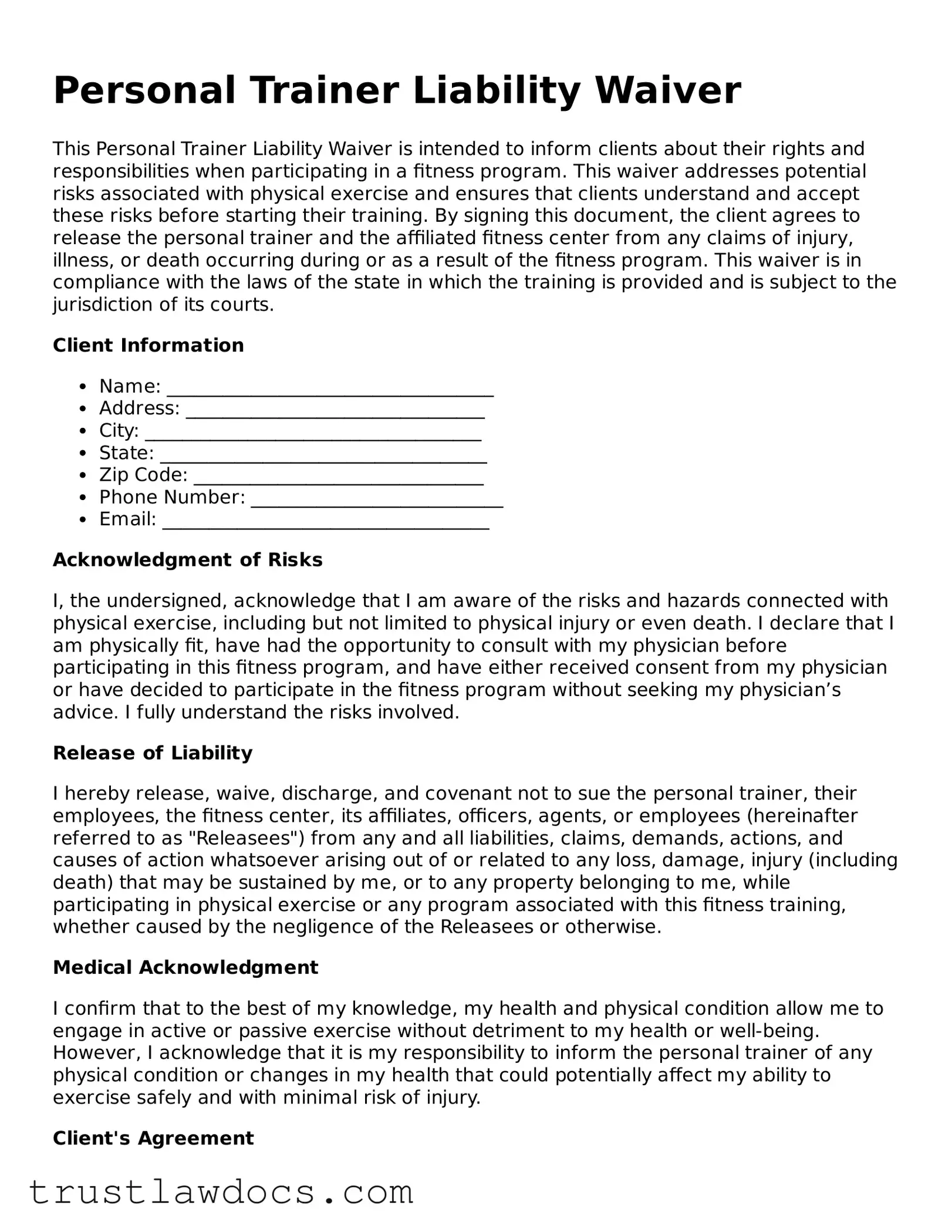Personal Trainer Liability Waiver
This Personal Trainer Liability Waiver is intended to inform clients about their rights and responsibilities when participating in a fitness program. This waiver addresses potential risks associated with physical exercise and ensures that clients understand and accept these risks before starting their training. By signing this document, the client agrees to release the personal trainer and the affiliated fitness center from any claims of injury, illness, or death occurring during or as a result of the fitness program. This waiver is in compliance with the laws of the state in which the training is provided and is subject to the jurisdiction of its courts.
Client Information
- Name: ___________________________________
- Address: ________________________________
- City: ____________________________________
- State: ___________________________________
- Zip Code: _______________________________
- Phone Number: ___________________________
- Email: ___________________________________
Acknowledgment of Risks
I, the undersigned, acknowledge that I am aware of the risks and hazards connected with physical exercise, including but not limited to physical injury or even death. I declare that I am physically fit, have had the opportunity to consult with my physician before participating in this fitness program, and have either received consent from my physician or have decided to participate in the fitness program without seeking my physician’s advice. I fully understand the risks involved.
Release of Liability
I hereby release, waive, discharge, and covenant not to sue the personal trainer, their employees, the fitness center, its affiliates, officers, agents, or employees (hereinafter referred to as "Releasees") from any and all liabilities, claims, demands, actions, and causes of action whatsoever arising out of or related to any loss, damage, injury (including death) that may be sustained by me, or to any property belonging to me, while participating in physical exercise or any program associated with this fitness training, whether caused by the negligence of the Releasees or otherwise.
Medical Acknowledgment
I confirm that to the best of my knowledge, my health and physical condition allow me to engage in active or passive exercise without detriment to my health or well-being. However, I acknowledge that it is my responsibility to inform the personal trainer of any physical condition or changes in my health that could potentially affect my ability to exercise safely and with minimal risk of injury.
Client's Agreement
I have read this Personal Trainer Liability Waiver thoroughly and understand that I am giving up substantial rights by signing it. I acknowledge being advised to seek my own legal counsel on matters related to this waiver before signing. I am signing this waiver freely and voluntarily, with a complete understanding of its terms. This waiver shall remain in effect for the duration of my participation in any fitness program with the personal trainer and cannot be modified except in writing and agreed upon by both parties.
Signature: _______________________________ Date: ________________
If the client is under 18 years of age, parent or guardian must also sign.
Parent/Guardian Signature (if applicable): _________________________ Date: ________________
